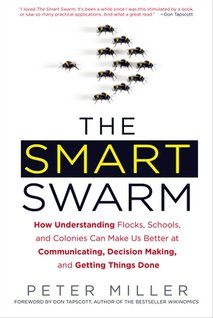
06 Aug 2010 02:43:46
A variety of termite in southwest Africa's Namibia — each specimen about a quarter-inch long — is not concerned with chewing at houses, though it does like eating wood. It builds mounds 10 feet high or more, with a system of natural air conditioning that may one day keep your house cool with no increase in your summer electricity bills.
Turbulent winds enter the mounds, where a system of tunnels and chambers drains moisture and carbon dioxide from them. Worker termites have built the system by dropping tiny bits of earth on piles that other worker termites have started before them. The winds freshen the stale air within the mound and moderate the temperature. Eventually the refreshed air reaches the quarters of the termite king and queen underneath the mound — and the nest of their subjects, about 2 million of them.
Biologists from the State University of New York in Syracuse have been studying the mounds in recent years. They don't contend that the termites consciously plan them or consciously undertake the oft-needed repairs. A French physician, Pierre-Paul Grasse, coined the word "stigmergy" a half-century ago to describe what he called "the stimulation of workers by the performance they have achieved."
Peter Miller, author of "The Smart Swarm," is a senior writer at National Geographic. He sees the mounds as a kind of self-organization like Wikipedia, the encyclopedia to which almost anyone can contribute and that counts on its millions of users to correct and amplify the texts it receives. Five years ago, CIA officials founded a system called the Intellipedia on similar principles for use by intelligence services.
Miller summarizes in two lessons what he has learned from swarms, flocks and colonies of selected insects, birds and animals, whose instinctive processes his book describes in easily understandable detail.
"The first is that working together in smart groups, we too can learn the impact of uncertainty, complexity and change.
"The second ... is that, as members of such groups we don't have to surrender our individuality. In nature, good decision-making comes from competition as much as from compromise, from disagreement as much as from consensus."
Though the lessons aren't new, they do bear some thinking about.
When we humans select groups to attack problems — groups such as legislatures and boards of directors — do we pay enough attention to the intellect of the members, as distinguished from our own personal interests and the personal interests of those we select?
Are we smart enough to put aside our annoyance at disagreement to look sympathetically for merit in the other fellow's point of view to avoid the damage of polarization?
Turbulent winds enter the mounds, where a system of tunnels and chambers drains moisture and carbon dioxide from them. Worker termites have built the system by dropping tiny bits of earth on piles that other worker termites have started before them. The winds freshen the stale air within the mound and moderate the temperature. Eventually the refreshed air reaches the quarters of the termite king and queen underneath the mound — and the nest of their subjects, about 2 million of them.
Biologists from the State University of New York in Syracuse have been studying the mounds in recent years. They don't contend that the termites consciously plan them or consciously undertake the oft-needed repairs. A French physician, Pierre-Paul Grasse, coined the word "stigmergy" a half-century ago to describe what he called "the stimulation of workers by the performance they have achieved."
Peter Miller, author of "The Smart Swarm," is a senior writer at National Geographic. He sees the mounds as a kind of self-organization like Wikipedia, the encyclopedia to which almost anyone can contribute and that counts on its millions of users to correct and amplify the texts it receives. Five years ago, CIA officials founded a system called the Intellipedia on similar principles for use by intelligence services.
Miller summarizes in two lessons what he has learned from swarms, flocks and colonies of selected insects, birds and animals, whose instinctive processes his book describes in easily understandable detail.
"The first is that working together in smart groups, we too can learn the impact of uncertainty, complexity and change.
"The second ... is that, as members of such groups we don't have to surrender our individuality. In nature, good decision-making comes from competition as much as from compromise, from disagreement as much as from consensus."
Though the lessons aren't new, they do bear some thinking about.
When we humans select groups to attack problems — groups such as legislatures and boards of directors — do we pay enough attention to the intellect of the members, as distinguished from our own personal interests and the personal interests of those we select?
Are we smart enough to put aside our annoyance at disagreement to look sympathetically for merit in the other fellow's point of view to avoid the damage of polarization?

